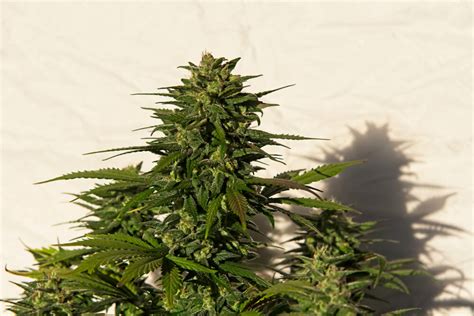The Autoflower Countdown: How Long Is Too Long?
Autoflowering cannabis strains, beloved for their ease of growth and predictable flowering cycles, still present growers with occasional challenges. One common question revolves around harvesting: how long is too long to leave your autoflowers before harvesting? This article will delve into the optimal harvest window, signs of ripeness, and the consequences of harvesting too early or too late.
What are Autoflowering Cannabis Plants?
Before we dive into the specifics of harvesting, let's briefly recap what makes autoflowers unique. Unlike photoperiod strains that rely on light cycles to trigger flowering, autoflowering strains begin flowering after a certain number of weeks regardless of light exposure. This is thanks to their Ruderalis genetics. This predetermined flowering cycle simplifies cultivation, making them ideal for beginners and growers with limited space or time.
Determining the Optimal Harvest Time: The Sweet Spot
Most autoflower strains have a stated lifespan of around 70-100 days from seed to harvest. However, this is just a guideline. The actual optimal harvest time can vary based on several factors including:
- Genetics: Different strains mature at different rates. Always check the breeder's information for a specific estimate.
- Growing conditions: Factors like nutrient levels, light intensity, temperature, and humidity significantly impact growth speed and maturity.
- Individual plant development: Even within the same batch, individual plants may mature at slightly different paces.
Instead of rigidly adhering to a set number of days, focus on observing the plant's visual cues.
Signs Your Autoflower is Ready for Harvest
Several key indicators signal harvest readiness. A combination of these signs provides the most accurate assessment:
- Trichome Maturity: This is the most crucial indicator. Trichomes are the tiny, resin-producing glands on the buds. Using a jeweler's loupe (magnifying glass), observe the trichomes. A milky-white appearance with a few amber trichomes indicates optimal ripeness for most users. Primarily amber trichomes suggest a more sedative effect.
- Pistil Color: Pistils are the hair-like structures emerging from the buds. Initially white or light orange, they turn orange or reddish-brown as the plant matures. While pistil color is helpful, it shouldn't be the sole determinant of harvest time.
- Bud Density and Appearance: Mature buds become denser and more compact, often exhibiting a significant increase in size during the final weeks of flowering. They will also have a noticeable aroma.
- Leaf Color Changes: Lower fan leaves may begin to yellow and wither as the plant channels its energy into the buds, particularly in the last few weeks of the grow cycle.
What Happens if You Harvest Too Early?
Harvesting too early results in significantly less potent buds with a noticeably weaker effect. The trichomes will contain less THC and other cannabinoids, leading to a less satisfying experience. The buds will also likely be less dense and aromatic.
What Happens if You Harvest Too Late?
Harvesting too late can also negatively impact your yield. While the THC concentration might reach a peak at some point, eventually, it starts to degrade. Over-ripe buds become dry, brittle, and can lose potency due to the breakdown of cannabinoids. They might also become more prone to mold and pest infestations.
How Long Can You Really Wait?
There isn't a definitive "too long" timeframe, as it depends on the specific strain and growing conditions. However, once the majority of trichomes have turned amber, you're likely past the optimal harvest window. Prolonging the harvest beyond this point increases the risk of degradation and potential problems.
H2: How do I know if my autoflower is showing signs of stress?
Stress in autoflowering plants can manifest in several ways, often impacting their final yield and potency. Signs of stress include: nutrient deficiencies (yellowing leaves, stunted growth), overwatering (wilting, root rot), underwatering (crispy leaves), light burn (brown or bleached leaf tips), pest infestations, and temperature extremes (wilting, stunted growth). Addressing these issues promptly is crucial to ensure a successful harvest.
H2: Can I extend the flowering time of an autoflower?
No, you cannot significantly extend the flowering time of an autoflowering plant. Their flowering cycle is largely predetermined by their genetics. While environmental factors can influence the speed of development slightly, they cannot artificially prolong the flowering phase substantially.
H2: What is the best way to harvest and dry autoflowers?
Harvesting involves carefully cutting the buds from the plant, leaving behind the stalk and larger fan leaves. Drying is crucial, and slow, even drying is preferred to preserve the quality of the buds. Hang the harvested buds upside down in a dark, well-ventilated area with appropriate humidity levels (around 50-60%) for 7-14 days until they are completely dry and brittle.
By carefully observing your plants and understanding the signs of maturity, you can ensure a bountiful harvest of high-quality autoflower buds. Remember that patience and attention to detail are key to success in growing cannabis, regardless of the strain.

